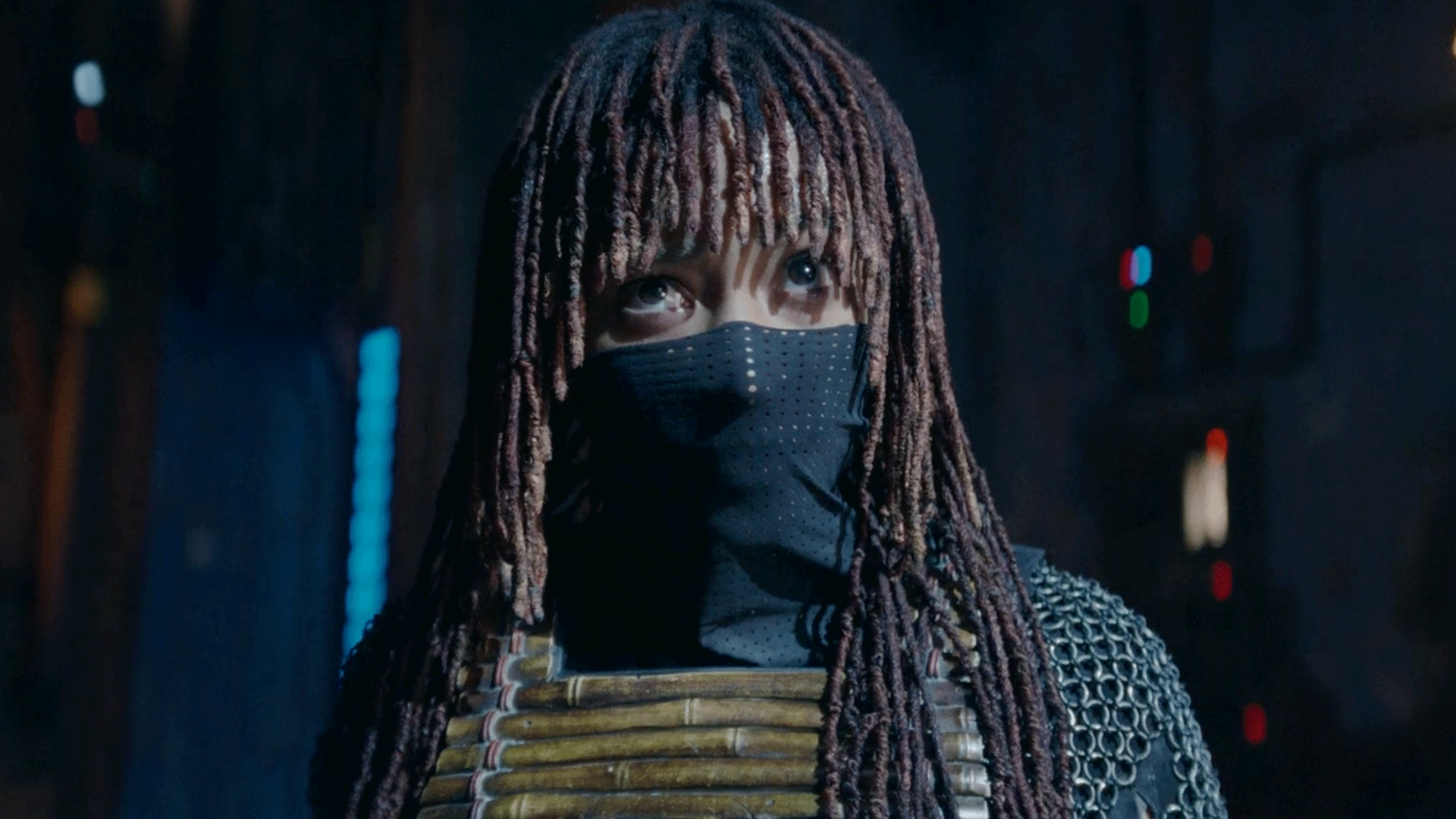It can be difficult for an MMA game to balance two seemingly contradictory halves: being both a satisfying sports simulation as well as a satisfying fighting game. Lean too hard toward simulation and you could alienate all but the most dedicated fans – but, move too far toward the crowd pleasing violence of something like Mortal Kombat, you might stray from that “as real as it gets” tagline instead. Finding the perfect mix of both sides is what makes EA Sports UFC 5 the best MMA game to date. It deftly balances these approaches into something much more fluid and life-like than past entries while also raising the stakes of every hit thanks to an impressive new damage system, which makes matches more exciting, risky, and rewarding.
UFC 5 is the first game in the series to carry an “M for mature” ESRB rating, and it’s not hard to see why. In UFC 4, fights never felt as high stakes as they do in a real MMA match, mainly because visible injuries were few and far between, and wounds didn’t continually bleed over time. Additionally, a finish was often necessitated by a Health Event from a particularly damaged area (Head, Body, Legs) which was hard to see coming at a glance. UFC 5 counteracts this by making the results from damage much more realistic, with more sophisticated Health Events that have a deeper impact on the player. For example, if you take a lot of shots to the face, it could break your nose and create cuts above your eyes. Icons in the shape of eyes and lungs will then appear under your health bar as a result, indicating both a loss of vision and difficulty breathing for your fighter. This can leave you with diminished capabilities, forcing you into making tough but rewarding decisions to either weather the storm and heal up between rounds or go for broke and try to finish your opponent before it’s too late.
The animations on fighter faces have undergone significant changes, with a total of 64,000 facial injury combinations possible. The results are unique to each fight, accruing minute by minute and round by round. This means that a cut you open up on an opponent in Round 1 can be exploited throughout the rest of the match until there’s a finish or a potential doctor stoppage – a newly added feature where, just like in real life, a doctor will step in, assess the damage, and discern if a fighter is fit to continue. In addition to depicting damage very vividly, blood and sweat from strikes will drop and accrue on the mat itself, so you can see the result of your work in a Jackson Pollack-like design below you as the fight continues. The new damage system is further complemented by UFC 5’s knockout finishes, which show a highly cinematic slow-motion replay that feels like you’re watching a finishing move in Tekken rather than a simple replay in a sports game.
The revised damage system and slow-motion KO replays completely augmented my approach. Earning a KO has never been more satisfying, and I found myself chasing them no matter the risk they incurred. That’s partly because there are impressive new fall animations for KO’d fighters from the standing position where they’ll drop face first into the mat, which have a depth and weight to them that look like an actual person dropping to the ground. That said, there are still some pretty stilted animations when a fighter is KO’d and falls onto their back. There is a tendency for their neck to jut forward and their limbs to hover a few inches above the mat just like in UFC 4. I was happy to see, though, that there were new and improved animations for TKOing a fighter on ground and pound strikes. In UFC 4, the finished fighter would still do the strange chicken neck animation where their head hovers above the mat, but now they’ll roll onto their side and curl into the fetal position (known as ‘turtling’) which is a really nice touch.
UFC 5’s next-gen presentation is a significant improvement overall, with well animated pre-fight walkouts and post-fight announcements that better mirror actual UFC broadcasts. An added bonus here is how the walkouts of specific fighters like Islam Machachev or Alex Perreira are based on their actual movements instead of just applying the same stock animations to every single fighter. Their designs are also uniformly excellent, creating a really solid likeness of my favorites both mid-match and during cutscenes. This personalization goes a long way in making UFC 5 feel unique and intentional.
Attack animations are much, much smoother, too, as the control system within UFC 5 has undergone a pretty significant overhaul for the better. Every move I attempted felt more fluid, real, and responsive, making UFC 4 seem positively clunky in comparison. Striking your opponent, especially with kicks, is refreshingly crisp and authentic, both looking better while giving you more agency over your fighter. Defense has also been redone as blocks are much stronger, preventing flash knockouts and easy overpowering. There’s a real snap to the movements now, and that added sense of realism is more exciting as I was able to build combos better and move much more nimbly than before. Another really nice touch is how smaller weight classes move much faster than the heavier ones, mirroring reality, which creates more variety fight to fight.
The new flow-based grappling and renewed submission system also removes the annoying minigames that plagued UFC 4. Those minigames often felt like a non-sequitur in the context of a fighting game, dramatically slowing down the action to focus on mechanics that you quite literally never use in any other situation. Now there is a simplified, intuitive control system which just has you move your left or right stick to change positions on the ground. There is also a hybrid setting where both simplified and complex choices are presented, which I really liked because it made it easier for me to escape from the bottom position by just pushing the left stick up. It also made doing more complex moves on top easier, so I could change positions quickly and then select a more complicated submission move to try. As a result, I found myself doing wrestling slams more easily in the 20+ hours I’ve played of UFC 5 than in the 150+ hours I have in UFC 4. Additionally, grappling and submission power was rebalanced so you won’t find yourself pinned to the ground for the majority of rounds or finished quickly by wrestler and jiu jitsu style fighters, which was always a previous point of frustration.
UFC 5’s Career Mode is the main attraction here, and I’m pleased to say that it’s deeper and more engaging than ever before. Career Mode is given a fresh coat of paint with an improved home page as well as some lifestyle fixes, such as the ability to simulate trainings that you’ve already completed in order to get to your fight quicker instead of grinding for forty minutes on repetitious drills before every match. Even so, the grind itself is a lot more enjoyable because Coach Davis, reprising his role from UFC 4, barks out four different challenges for every three minute sparring session versus just one specific challenge. This creates a lot more variety and dimension to your training, pushing you to beat each challenge within the timespan to open up the next. These challenges mix both straightforward directives, like landing any strikes until you reach ten, with others that are a bit more difficult, such as evading strikes by moving your head.
As a relatively seasoned UFC player, I even found myself timing out or straight up failing the evasion challenges here and there – they were difficult enough to frustrate me, but not bad enough that they drove me away from playing entirely. The new damage system has interesting reverberations as you train in Career Mode as well. Getting cut during sparring is easy if you’re not careful, and it’ll result in penalties to both the amount of time you can train within the week as well as the money you earn. This is especially important in the early stage of your career when money is in short supply.
There are quite a few additional cutscenes with Coach Davis now, too, and they’re much better written this time. Coach Davis’s presence throughout is not only welcome but actively missed once his scenes become less prevalent as you move from the minor leagues to the UFC. But the presence of UFC star Valentina Shevchenko as a coach and guide is a welcome addition that helps make the Career Mode actually feel like a real story. Her scenes are admittedly pretty rare, however, rendering her appearance something more like a novelty cameo than a substantive contribution.
Other elements of Career Mode could have used some more TLC, too, such as some of the copy/paste dialogue lifted right from UFC 4 for a good portion of the social media interactions. I also have some minor frustrations with the lack of new tattoo designs and haircuts for custom fighters. But these shortcomings are eased by small additions elsewhere, such as a deeper sense of fan interaction on social media, like promising the type of finish you’re going for in a fight or pledging to block half of the shots that are thrown your way.
There’s a significant improvement in Fight IQ with the CPU characters you’ll face throughout all the modes. Even at Normal difficulty, I had to both attack and defend more thoughtfully because my opponents had a much better sense of timing and counters. You’re still able to choose your difficulty at the outset of your Career Mode journey, but UFC 5 even calls out the noticeable uptick in difficulty as you reach higher in the rankings, automatically bumping you up a notch once you’re in Championship fights. Thankfully, you’re still able to restart matches if you end up losing a fight in vicious fashion. This is helpful since many of the career goals you have, once again, revolve around having a high amount of consistent victories. These small additions really rounded out the Career Mode, while the depth to the story and more nuanced fight mechanics allow for even more replayability. I’m really excited to take fighters across a few different weight classes through the mode.
Offline modes such as Quick Fight are still present, but are augmented by the new Fight Contracts mode where one-off matchups are generated each day. These contracts are generally lower risk but promise in-game currency that can be used to unlock new clothing, celebrations, and more. Fight Contracts will vary in style (going from simulation MMA to Stand and Bag, for example) and difficulty (going from Normal to Legendary), creating a more stimulating and exciting experience than a user-curated Quick Fight. I found these fights to be really engaging if I wanted to key into a single one-off match versus delving further into Career Mode or fighting online.
The final major innovation to note in UFC 5 is Online Career mode. The online Ranked Fights and Quick Fights are still available, but, for the first time, you’re able to take a custom fighter into online competition and earn evolution points to improve their attributes. If you’re planning to use the same fighter you build a career mode with, you’ll only be able to transfer their appearance but not their attributes – and while this might seem frustrating at first, it really helps even the playing field. You won’t be able to outclass anyone right away unless it’s on pure playing ability and vice versa. As someone who really appreciates both the offline Career Mode and online play, I am really excited to spend more time with this mode. You tend to get a lot more unique, even strange fights when playing against a real person on the other side of the octagon.







